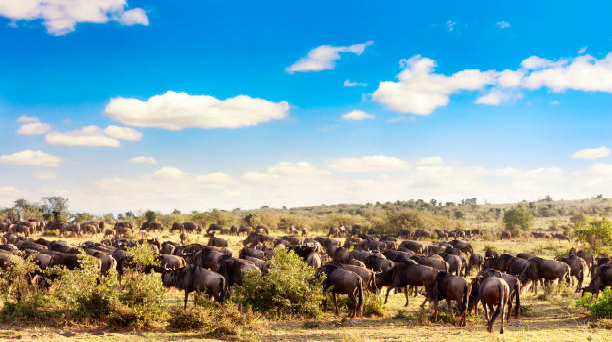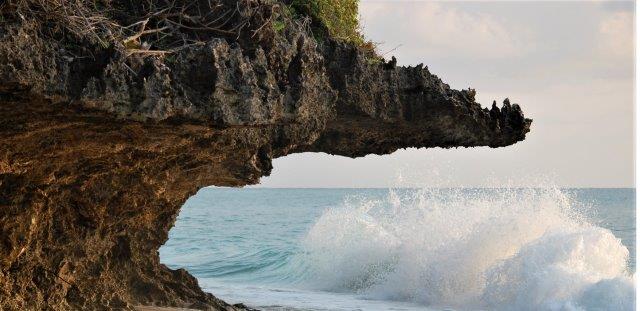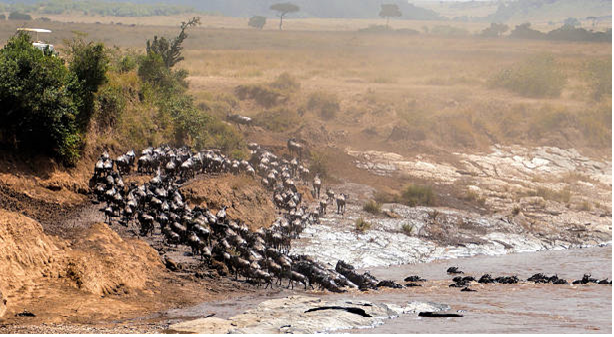serengeti migration in detals
The brief downpours start around early November. A small after this, in late November and December, the crowds of the wildebeest relocation arrive on the short-grass fields of the Serengeti. These are south and east of Seronera, around Ndutu and incorporate the north of the Ngorongoro Preservation Range. Scattered over these fields, wildebeest and zebra are all over nourishing on the new, nutritious grasses. They remain here through January, February and Walk, with most wildebeest calves born in a brief window around February. Steadily they spread west over these fields, at that point around April they begin their incredible movement north.
Migration safari in may:
the Serengeti's wildebeest all appear to be moving north, moving to look for new touching and water. The region around Moru Kopjes and west of Seronera is at that point frenzied with a arrangement of moving columns, regularly containing hundreds of thousands of creatures joined by numerous zebra, and a diffusing of Thomson's and Grant's gazelles.
Some of the relocation at that point head due north of Seronera, but most are more often than not assist west. Around June the wildebeest movement is regularly ended on the south side of the Grumeti Stream, which has a few channels which square or moderate their movement north. The wildebeest at that point assemble there, within the Western Passage, frequently building up to a tall thickness some time recently crossing the waterway. The stream here is regularly a arrangement of pools and channels, but it's not ceaseless and so while they continuously speak to an yearly devour for the Grumeti River's huge crocodiles, these aren't ordinarily very as fabulous as the intersections of the Mara Stream, encourage north.
Migration safari in july and August:
The wildebeest migration continues moving northwards , often spreading out across a broad front. some heading through Grumeti Reserve and Ikorongo, others north through the heart of the Serengeti National Park.
MIGRATION SAFARI IN SEPTEMBER:
sees the groups spread out over the northern Serengeti, where the Mara Stream gives the movement with its most genuine deterrent. This stream spouts through the northern Serengeti from Kenya's adjoining Maasai Mara Game Reserve. Observing the unhinged groups of the wildebeest relocation crossing the Mara Waterway can be exceptionally fabulous; there are frequently scenes of extraordinary freeze and disarray. It's common to see crowds cross the Mara River north on one day, and after that back south a few days later.
MIGRATION SAFARI IN OCTOBER:
the wildebeest herds are migrating again with more agreement: all are heading south, through western Loliondo and the Serengeti National Park's Lobo zone, returning to the green shoots which take after the downpours on the short-grass fields of the southern Serengeti in November



